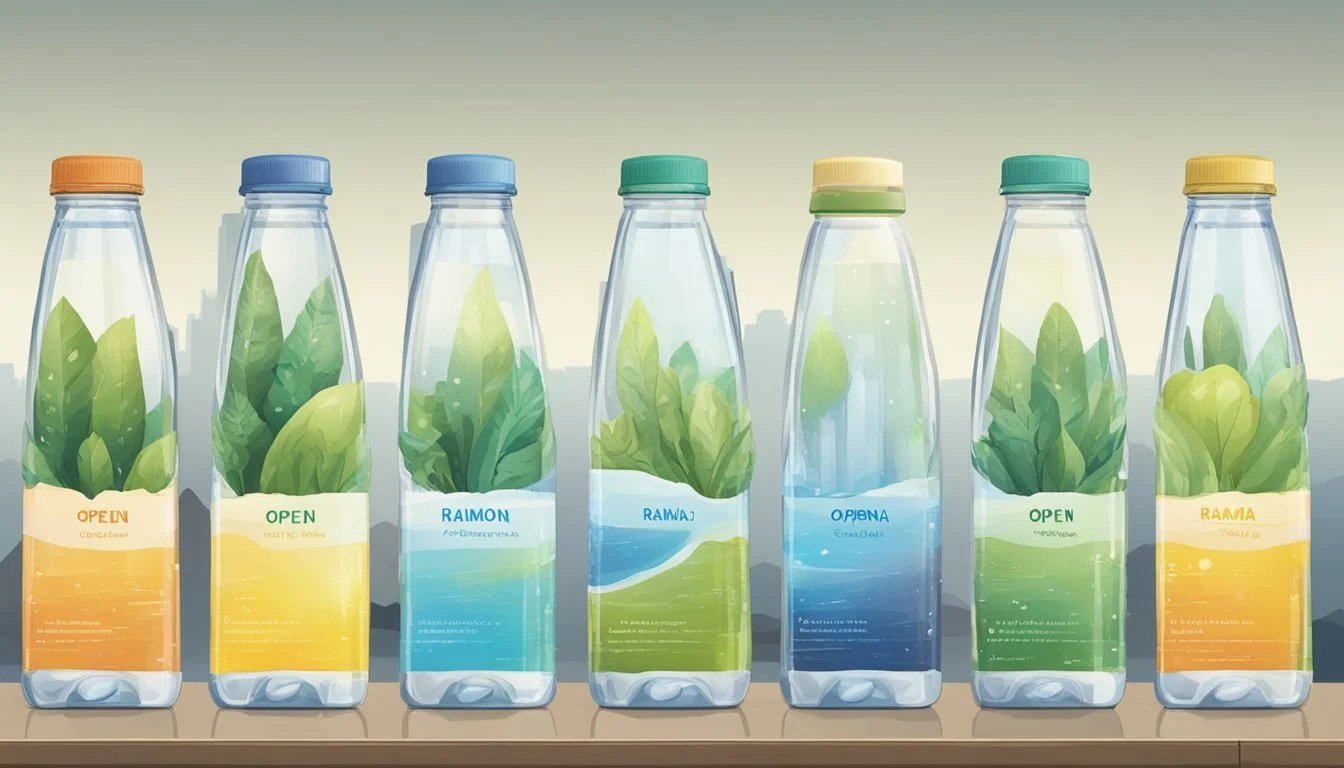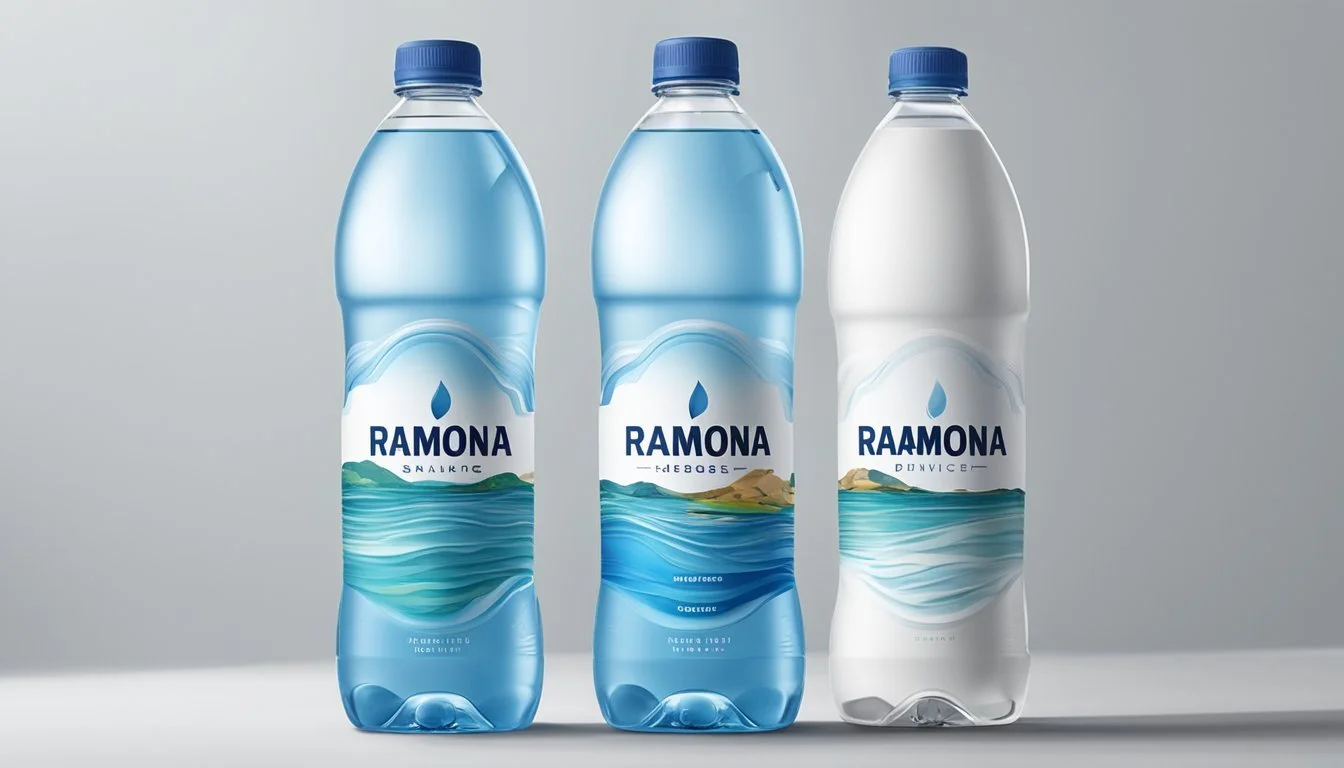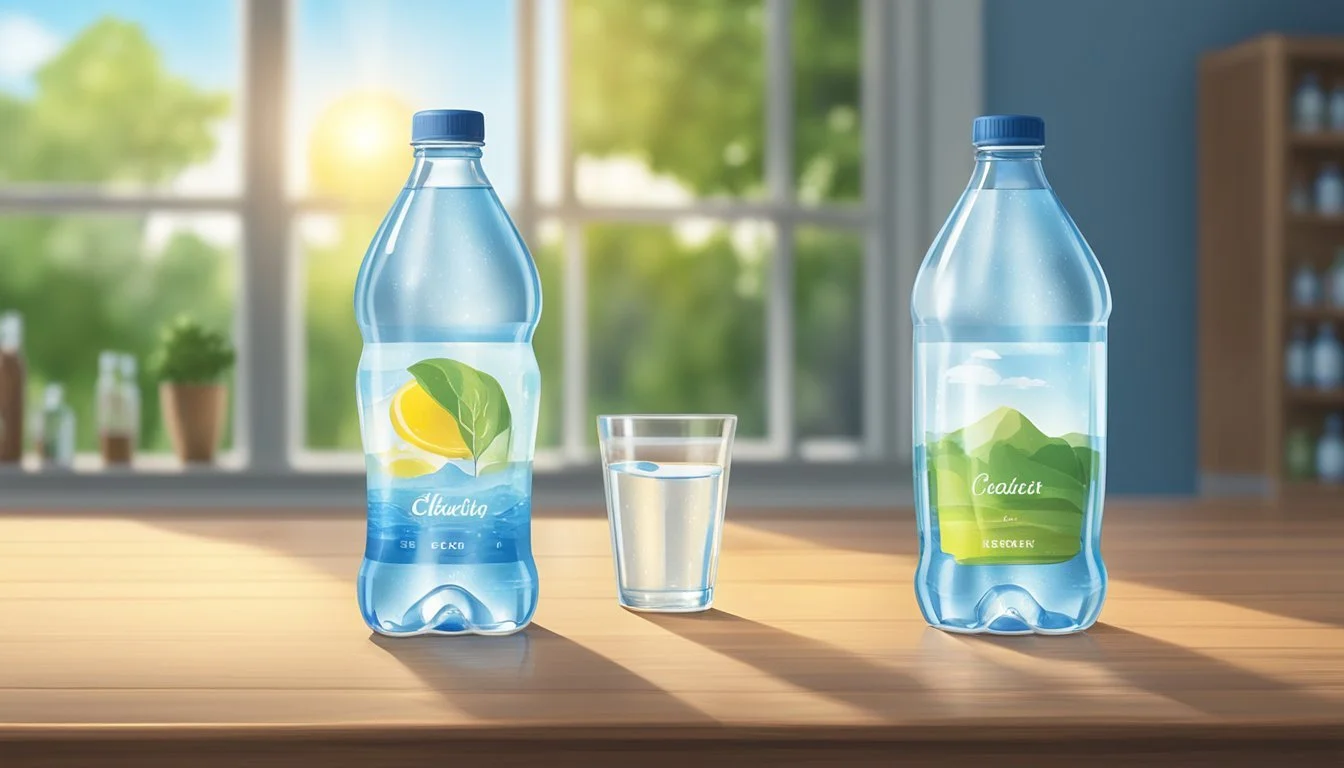Open Water vs. Ramona
A Comprehensive Bottled Water Comparison
When it comes to choosing bottled water, consumers often find themselves comparing brands like Open Water and Ramona. Open Water prides itself on sustainability, offering aluminum-packaged water that stands out in an industry dominated by plastic. Ramona, on the other hand, is known for its pure taste and reliable quality, making it a staple for many health-conscious individuals.
In terms of flavor, Open Water delivers a crisp, clean taste that leaves minimal aftertaste, which is perfect for those who prefer their hydration to be refreshingly simple. Ramona's bottled water, also well-regarded for its purity, offers a smooth, almost silky mouthfeel that some find more appealing.
When deciding which bottled water is better, it often comes down to personal preference and priorities. If sustainability is high on your list, Open Water's eco-friendly approach might tip the scales. For those prioritizing taste and consistency, Ramona could be the better choice.
The Basics of Bottled Water
Bottled water is a staple in grocery stores, marketed for its convenience and purported health benefits. Understanding its health implications and hydration effectiveness is essential for consumers.
Health Implications and Mineral Content
Different brands of bottled water vary in mineral content, impacting health. Minerals found in water include calcium, magnesium, and potassium, essential for bodily functions.
Alkaline water, with higher pH, is promoted for potential health benefits like improved hydration and acid-neutralizing effects.
However, not all bottled water contains significant electrolyte levels or added vitamins. Spring water, often naturally filtered, might offer a natural mineral balance, while purified water might lack these nutrients.
Hydration Factors
When choosing bottled water for hydration, both the source and mineral content matter. Electrolytes improve water absorption and retention, enhancing hydration.
Calcium and magnesium levels also play roles in maintaining optimal body hydration and function. Consumers looking for enhanced hydration might prefer waters labeled with added electrolytes.
Enhanced waters include additives like vitamins to boost nutrient intake. Various bottled waters offer specific hydration properties, catering to different needs and preferences.
Comparing Open Water and Ramona
In comparing Open Water and Ramona, the focus will be on taste profile, pH levels, and the materials used in packaging. These factors are essential for consumers who seek not only hydration but also sustainability.
Taste Profile and pH Levels
Open Water offers a clean and crisp taste, attributed to its high purification standards. The pH level typically measures around 7.3, neutral and close to tap water, which some people prefer for its balance. Additionally, it often contains natural electrolytes that can enhance the taste and appeal to those looking for added hydration benefits.
Ramona, on the other hand, emphasizes a mineral-rich taste, giving it a distinctive flavor profile that some consumers love. The pH level can vary but usually ranges from 7.0 to 7.4, staying within a neutral range. This balance of minerals provides a subtle, yet unique taste that can be pleasing to the palate.
Packaging Materials
Open Water sets itself apart by using recycled aluminum cans and recycled plastic cartons, promoting its commitment to sustainability. These materials are 100% recyclable, making the product an eco-friendly choice for environmentally conscious consumers. The aluminum cans, in particular, are praised for their ability to keep water cool and fresh for a longer period.
Ramona distinguishes itself through the use of glass bottles. This choice not only appeals to those who prefer the aesthetic and sturdiness of glass but also to consumers who are wary of plastic contamination. Glass is fully recyclable and can be reused, making it another strong contender for people focused on reducing their environmental footprint.
Environmental Considerations
When comparing Open Water and Ramona, it's crucial to assess their environmental impact. This includes the sustainability of the water sources and the materials used for packaging.
Sustainability of Resources
Open Water sources its product from natural spring water located in protected environments. These springs are monitored for environmental impacts, ensuring a sustainable extraction process. The company also partners with environmental organizations to maintain the ecological integrity of their sources.
Ramona, on the other hand, acquires water from both municipal supplies and natural springs. While they ensure quality, the environmental ramifications can vary. Using municipal supplies can sometimes lead to lower environmental footprints compared to over-tapping natural springs.
Both brands claim they follow EPA guidelines to minimize environmental degradation. However, Open Water gets an edge due to their focused efforts on sustainability through active resource management and ecological partnerships.
Impact of Packaging
Packaging is another critical factor. Open Water uses fully recyclable aluminum cartons, which have a lower carbon footprint compared to traditional plastic bottles. Aluminum can be recycled indefinitely, reducing the need for constant resource extraction.
Ramona utilizes both plastic and glass bottles. Their plastic bottles, although recyclable, often contribute to landfill waste due to low recycling rates. Glass, while more recyclable than plastic, is heavier and less energy-efficient to transport, increasing its overall environmental impact.
Open Water’s choice of aluminum cartons aligns better with environmentally friendly practices. Recyclable and lightweight, these cartons help reduce both waste and transportation emissions, positioning Open Water as a more sustainable choice in packaging.
Price Comparison and Value
When comparing bottled water brands like Open Water and Ramona, there are significant differences in cost efficiency and accessibility. We will review their prices and value propositions by considering factors like luxury and general accessibility to consumers.
Cost Efficiency
Open Water tends to position itself at a higher price point, reflecting its premium branding and eco-friendly packaging. Typically, a 12-pack of Open Water cans can cost around $20 to $25 in grocery stores.
Ramona, on the other hand, is generally more affordable. A similar 12-pack might cost between $10 to $15. For budget-conscious consumers, Ramona provides a more economical option without compromising too much on quality. In terms of cost efficiency, Ramona offers better value for everyday purchases.
Luxury vs. Accessibility
Open Water is marketed as a luxury brand, with its sleek aluminum packaging and focus on sustainability and purity. This positions it alongside other premium brands like Voss and Acqua Panna, which also prioritize high-quality packaging and a refined image. These factors contribute to its higher price and often make it less accessible to the average consumer.
Ramona is designed to be more accessible. Its pricing strategy makes it comparable to mainstream bottled water brands available in grocery stores, such as LaCroix. This broader accessibility ensures that a wider range of consumers can enjoy Ramona without the premium cost associated with luxury brands.
Through the lens of luxury and accessibility, Open Water’s high-end approach contrasts sharply with Ramona’s more widespread availability, making each suitable for different market segments based on their needs and priorities.
Brand Reputation and Consumer Trust
Understanding the perception of bottled water brands among consumers can reveal critical insights into their success and appeal. Established brands often leverage their long-standing reputation while emerging names attempt to carve out their niche.
Market Leaders in Bottled Water
Leading bottled water brands such as Evian, Fiji, Dasani, and Aquafina have built solid reputations over the years. Evian, sourced from the French Alps, claims purity and mineral balance, positioning it as a premium option. Fiji stands out with its artisanal look and claims of natural filtration through volcanic rock.
Dasani and Aquafina, though often viewed as more commercial, maintain strong market presence due to extensive distribution networks backed by Coca-Cola and PepsiCo respectively. Their reliability and widespread availability play critical roles in consumer trust. These brands frequently undergo rigorous quality checks to maintain their market positions.
Emerging Brands
Newer entrants like Ramona and Open Water are gaining traction with distinct brand stories and environmental commitments. Ramona emphasizes a fun, approachable image, targeting a younger demographic with its sparkling options. It focuses on transparency and source quality to build trust.
Open Water appeals to eco-conscious consumers by prioritizing sustainability. Using reusable aluminum bottles, it targets reducing plastic waste, which resonates with environmentally aware customers. Emerging brands like Essentia, Core Hydration, and Flow showcase specific health benefits such as pH balance and natural electrolytes, aiming to compete directly with established names through differentiation.
These emerging brands often leverage social media and influencer partnerships to build a loyal customer base quickly. Their ability to innovate and address modern consumer concerns helps them steadily gain market share.
Health and Safety Standards
When comparing Open Water and Ramona, understanding their adherence to health and safety standards provides valuable insights into their quality and reliability for consumers.
Regulatory Compliance
Both Open Water and Ramona must comply with the Food and Drug Administration (FDA) regulations, which ensure that bottled water meets standards similar to those set by the Environmental Protection Agency (EPA) for tap water. These standards include limits on contaminants like lead and microbial elements, ensuring water safety.
Open Water and Ramona must also follow Good Manufacturing Practices (GMPs) defined by the FDA, which govern the bottling process, equipment sanitation, and storage conditions. Compliance with these regulations helps mitigate risks associated with contamination and ensures consistent product quality.
Contaminants and Filtration Processes
One of the key aspects of bottled water safety is its purification process. Open Water utilizes advanced purification methods such as reverse osmosis, which effectively removes various contaminants. This process ensures the water is free from harmful chemicals and heavy metals like lead.
Ramona, on the other hand, employs a multi-step filtration system, including carbon filtration, to eliminate impurities. Such methods are comparable to using a Brita pitcher at home but on an industrial scale. Both brands face rigorous testing to detect and remove contaminants, including fertilizers, solvents, and plastic-derived chemicals, ensuring safe consumption.
By adhering to stringent purification processes, both brands significantly reduce the presence of potential health hazards in their bottled water offerings.
Consumer Preferences
Understanding consumer preferences involves examining the role of water sommeliers and how taste and health benefits influence choices. Consumers often rely on experts, such as water sommeliers, and personal taste preferences, balancing these with perceived health benefits.
The Role of Water Sommeliers
Water sommeliers, specialists who can distinguish between types and qualities of bottled water, play a significant role in consumer preferences. They evaluate not just taste but also the mineral content and source of the water.
For example, a sommelier might highlight the crisp, balanced taste of Open Water compared to the slightly tangy finish of Ramona. Their expertise helps consumers understand subtle differences, just as a wine sommelier would for vintages.
In addition, water sommeliers often educate consumers on factors like mineral content. Mineral water can contain varying levels of calcium, magnesium, and other minerals, impacting both taste and health benefits.
Taste Versus Health Benefits
Taste is often the first criterion consumers consider when choosing bottled water. Some prefer the clean, pure taste that lacks any mineral or plastic aftertaste, such as what is found in Open Water. Others might enjoy a mineral-rich profile, which might include a slight tang, like Ramona.
Health benefits are another critical factor. Many people perceive bottled water as healthier than tap water, often due to bottled water’s consistent quality and advertising. For instance, Open Water markets itself as being both clean and environmentally conscious, appealing to health and eco-conscious consumers.
Additionally, bottled water brands often highlight their mineral content. This appeals to those seeking added health benefits from minerals like calcium and magnesium, influencing their preference and purchase choices.
Alternate Hydration Options
In addition to traditional bottled water, many consumers turn to other beverages to meet their hydration needs. These alternatives often provide extra nutrients, flavors, or fizziness, appealing to different tastes and requirements.
Sports Drinks and Enhanced Water
Sports drinks and enhanced water like Gatorade and Propel are popular options. These beverages contain electrolytes such as sodium and potassium, which help replenish what the body loses during intense physical activity.
Additionally, they often incorporate vitamins and minerals aimed at improving performance and recovery. Gatorade, for instance, includes a balance of electrolytes and carbohydrates, making it suitable for athletes needing quick energy. Propel, known for being calorie-free, adds vitamins like B6 and B12, catering to those who need a boost without extra calories.
With their added nutrients, these drinks are ideal for fitness enthusiasts, but their higher sugar content might be a concern for those watching their intake.
The Appeal of Flavored and Sparkling Water
Flavored and sparkling waters offer another hydration alternative, combining taste and fizziness without the drawbacks of sugary drinks. Brands like La Croix and San Pellegrino have become trendy for their variety of flavors and natural ingredients.
La Croix, for example, offers a broad selection of naturally-essenced sparkling waters, free from sugars and artificial sweeteners. This makes it an attractive option for those who want hydration with a twist of flavor without additional calories.
San Pellegrino takes it a step further by offering mineral-rich sparkling water, which provides a pleasant mouthfeel and slight mineral taste. This makes it a sophisticated choice for those who appreciate a more refined beverage.
Both types of water offer hydration with added pleasure and minimal impact on calorie intake, making them versatile choices for everyday consumption.
Practical Tips for Water Consumption
Choosing the right method to consume water is crucial for both health and environmental reasons. This includes filtering tap water at home and using reusable bottles.
Using Water Filters at Home
Water filters are an effective way to ensure safer drinking water. Filters can remove contaminants such as lead, chlorine, and bacteria. Tap water can be run through Brita pitchers or installed filters on faucets, making it a convenient and cost-effective solution.
Different filters suit varied needs. For instance, activated carbon filters excel at removing chlorine. Reverse osmosis systems can tackle a broader range of contaminants. Consistently replacing filter cartridges is crucial to maintain effectiveness. Moreover, using filtered tap water can reduce reliance on bottled water, supporting both health and the environment.
Advantages of Reusable Bottles
Investing in a reusable water bottle can provide numerous benefits. Firstly, it mitigates plastic waste, contributing to environmental conservation. Popular materials include stainless steel, glass, and BPA-free plastic. These materials are durable and safe for repeated use.
Reusable bottles also offer convenience. They can be filled with filtered tap water, ensuring that one has access to safe, clean water throughout the day. Many modern bottles come with additional features like insulation, keeping water cold for extended periods. This promotes regular hydration and can be more economical compared to frequently purchasing bottled water.
The Bottom Line
Open Water and Ramona offer unique advantages to consumers.
Open Water stands out for its commitment to sustainability. Packaged in 100% recyclable aluminum bottles, it offers a reusable bottle option that reduces plastic waste. This makes it a safer choice for the environment.
Ramona, on the other hand, is known for its taste. With a clean, crisp flavor, it ranks high on many taste tests. The brand also emphasizes the purity and quality of its source water.
Feature Open Water Ramona Packaging 100% Recyclable Aluminum Bottles Traditional Plastic Bottles Environmental Impact Low (reusable, recyclable) Higher (plastic waste) Taste Quality Decent Excellent Safety Contains Low Contaminants Contains Low Contaminants Price Moderate Moderate to High
Taste and texture are subjective, but Ramona's water is often highlighted for its smoothness. Open Water may have a more neutral taste, appealing to those who prefer a subtler drinking experience.
When it comes to environmental impact, Open Water takes the lead. With a push towards reducing single-use plastics, its aluminum bottles are a significant advancement in sustainable packaging.
Price is relatively comparable between the two, although Ramona's premium taste can sometimes come at a higher cost. Both brands provide a high-quality hydration experience, yet their differences in packaging and environmental focus set them apart distinctly.
More About Open Water
Aqua Carpatica vs Open Water: Which Bottled Water is Better?
Cascade Mountain vs Open Water: Which Bottled Water is Better?
Core Hydration vs Open Water: Which Bottled Water is Better?
Crystal Geyser vs Open Water: Which Bottled Water is Better?
Hawaii Volcanic vs Open Water: Which Bottled Water is Better?
Hawaiian Springs vs Open Water: Which Bottled Water is Better?
Icelandic Glacial vs Open Water: Which Bottled Water is Better?
Mountain Valley Spring Water vs Open Water: Which Bottled Water is Better?
Nestle Pure Life vs Open Water: Which Bottled Water is Better?
Open Water vs Kirkland Signature: Which Bottled Water is Better?
Open Water vs Whole Foods 365: Which Bottled Water is Better?
Richard's Rainwater vs Open Water: Which Bottled Water is Better?
San Pellegrino vs Open Water: Which Bottled Water is Better?
Solan de Cabras vs Open Water: Which Bottled Water is Better?
Talking Rain AQA vs Open Water: Which Bottled Water is Better?
Whole Foods Italian Still Mineral water vs Open Water: Which Bottled Water is Better?









